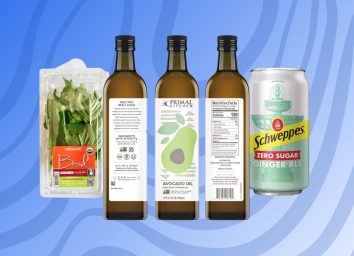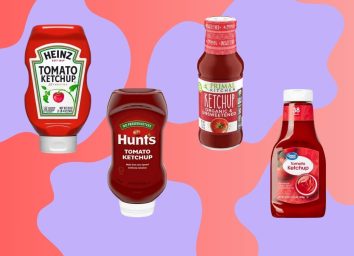8 Confusing Food Labels and What They Actually Mean

Cheese puffs don't come from the earth in any way, shape or form, right? How could they possibly be natural? Labels such as "natural" or "artificial" may seem pretty straightforward, but in actuality they could mean a whole host of things. Some food labels are more strictly regulated than others, which leads to a lot of confusion. With the assistance of Maria-Paula Carrillo, M.S., R.D.N., L.D, we'll help you put the grocery store guessing game to rest once and for all.
Natural
Don't give a product an automatic place in your shopping cart just for boasting this label; this term has quite a lot of room for misunderstanding and misinterpretation among consumers. There's no hard and fast definition of it because it's not regulated by the FDA. "With that said, the FDA seems ok if this term is used on foods that do not contain added color, artificial flavors, or synthetic substances," says Carrillo. Technically speaking, you could print "natural" on a bag of licorice without being at fault. Just know that natural does not mean healthy in all cases. "A food labeled 'natural' isn't necessarily healthier or better for you. This claim is very misleading to consumers," says Carrillo. Take a look at the ingredient list if you really want to know if what you're putting in your mouth actually comes from nature.
Non- GMO
Though GMO—Genetically Modified Organisms—has become more of a mainstream term, most people still don't know exactly what it means. If you see a product labeled "Non-GMO," it means the ingredients used have not been altered from their natural state or enhanced. The term is not regulated by the government, but rather by a non-profit organization called The Non-GMO Project. Torn by all the circulating opinions? Go with your gut feeling on this one; Carrillo believes eating non-GMO should come down to a personal choice, adding, "The truth is that foods from genetically engineered plants must meet the same safety requirements as traditional foods."
Artificial Flavors
If you see artificial flavors or flavoring on the box, it's tipping you off to how that food gets its taste, and as you would assume—the flavor did not come from anything that grows in a garden. "This term refers to any flavoring that is not derived from a whole food source, such as a spice, fruit, vegetable, edible yeast, herb, bark, bud, root, leaf or similar plant material, meat, fish, poultry, and so on,"says Carrillo. Both natural and artificial flavors are made in a lab, but artificial flavoring is created from synthetic rather than natural chemicals. One benefit of choosing natural over artificial is that natural flavors often exist in more nutrient-dense foods.
USDA Certified Organic
Organic is arguably the most tightly regulated label. The term organic refers to the way the food has been grown and processed by farmers. To be awarded certification, products must be produced without any genetic engineering, ionizing radiation, or sewage sludge, and also produced according to the National List of Allowed and Prohibited Substances. "Overall, if a product wants to claim that it or its ingredients are organic, it must be certified. Without certification, a product cannot use the USDA organic seal or claim anywhere on the packaging to be organic," explains Carrillo. Eating organic definitely has its benefits. One study published in the Annals of Internal Medicine found that eating organic produce and meat reduces consumer's level of pesticide ingestion and cuts your exposure to antibiotic-resistant bacteria. Also, if you are trying to avoid GMOs, certified organic products are a good bet; they're not legally allowed to contain GMOs.
Made with Organic
Products may under no circumstances claim to be certified organic or use the certified organic seal unless they have passed all requirements, however, they do have some wiggle room. Foods may claim to be "made with" organic ingredients if they do contain a considerable amount. There are still some rules regarding use of this label, including the requirement that 70 percent of the product must be certified organic ingredients (excluding salt and water), points out Carrillo. Also, products must identify somewhere on the packaging—usually in the ingredients list via an asterisk or other mark—which ingredients are in fact organic.
Sell by
Food product dating has got to be among the most confusing data you can find on a food product. Sell by? Best by? What do they mean?! For starters, the "sell by" date does not actually concern you, the consumer. "It tells the store how long to display the product for sale," says Carrillo. You, the hungry consumer, should buy the product before the date expires, however.
Best if Used by
What will happen if I eat my spinach one day after the "best if used by" date? Will I become suddenly ill, or can I actually continue eating the "expired" greens for a few days before I keel over? Carrillo assures that this date is not a warning for safety, but rather for taste. "This is the recommended date for best flavor or quality. It is not a purchase or safety date," says Carrillo.
Use by
This is the date you should pay the closest attention to. It is the last date recommended for the use of the product while at peak quality, and has been determined by the manufacturer of the product. "If product has a 'use-by' date, follow that date. If product has a 'sell-by' date or no date, cook or freeze the product by the times recommended by the USDA," says Carrillo.






